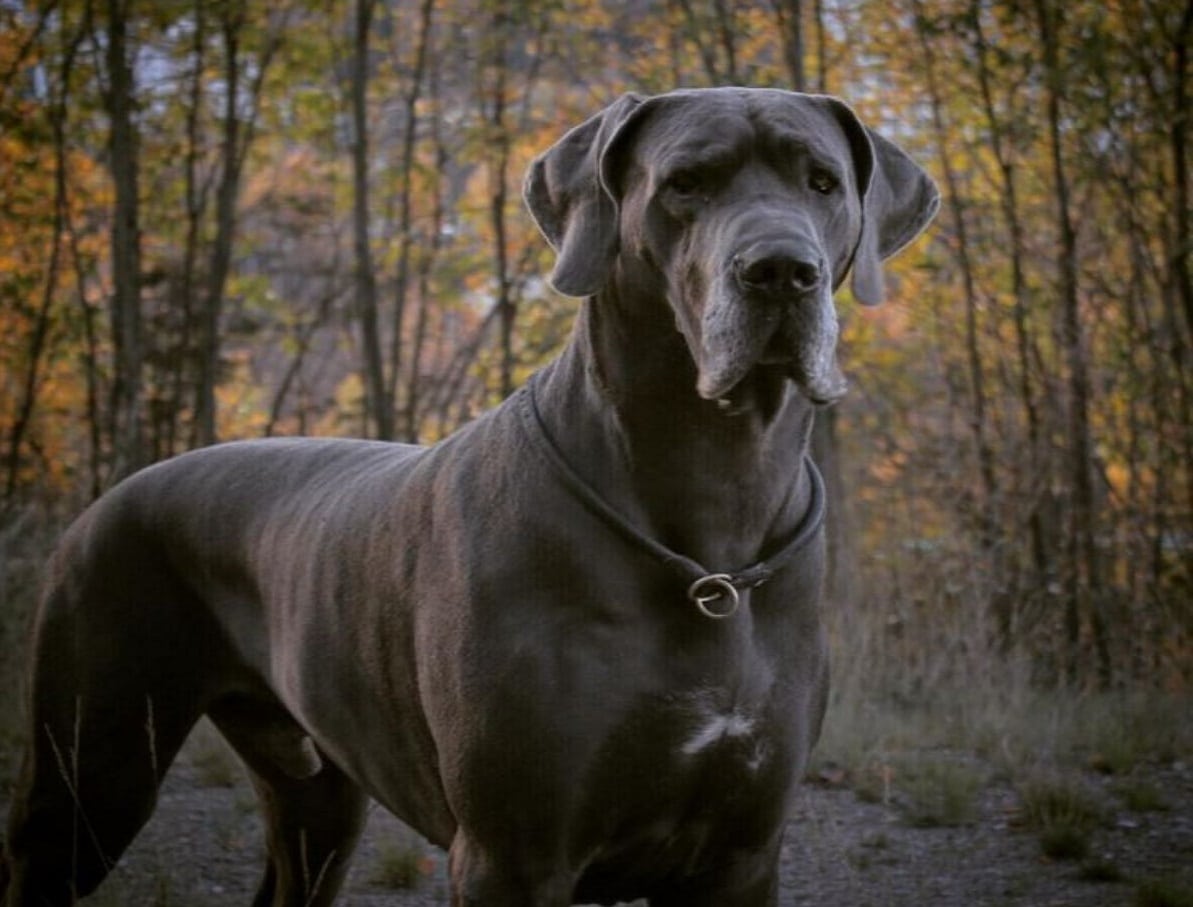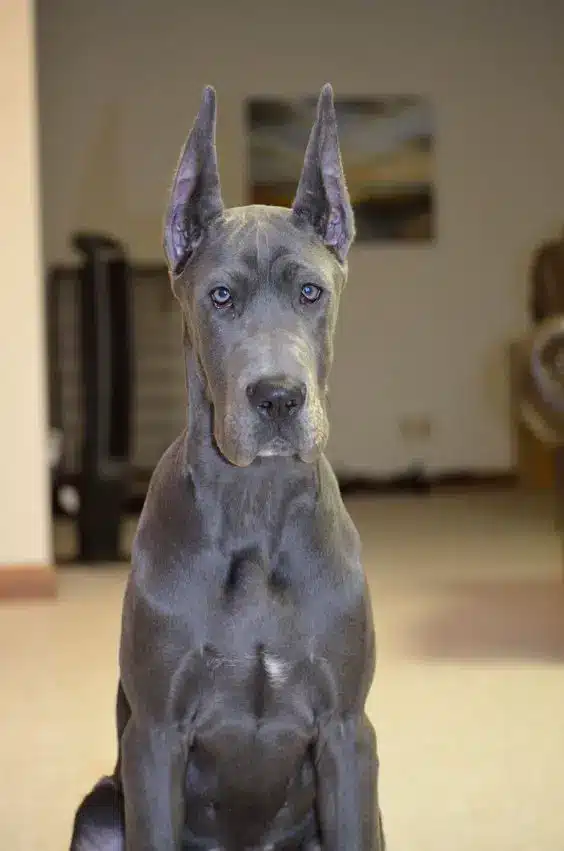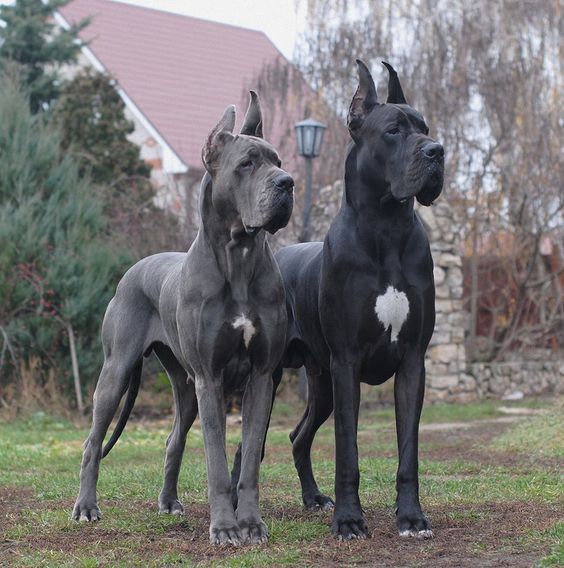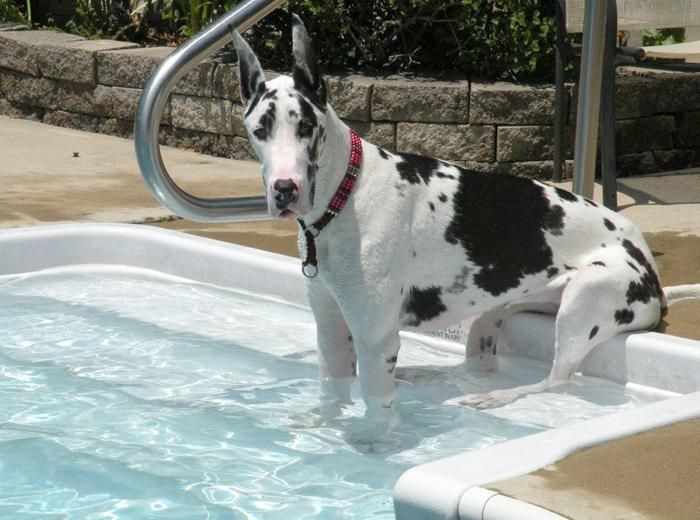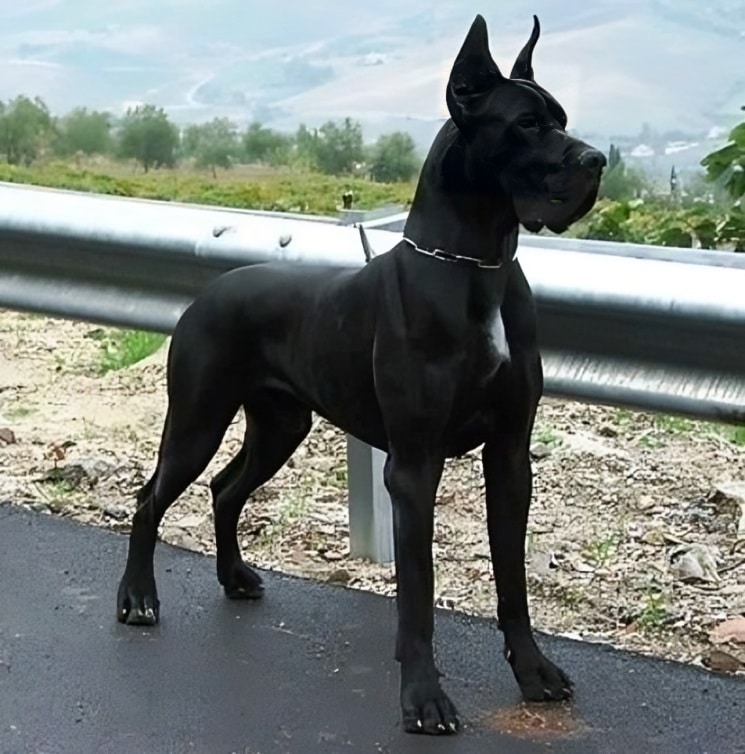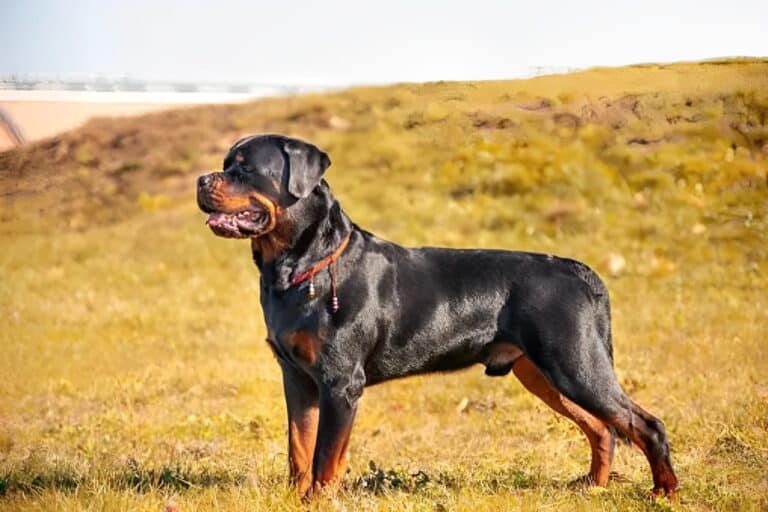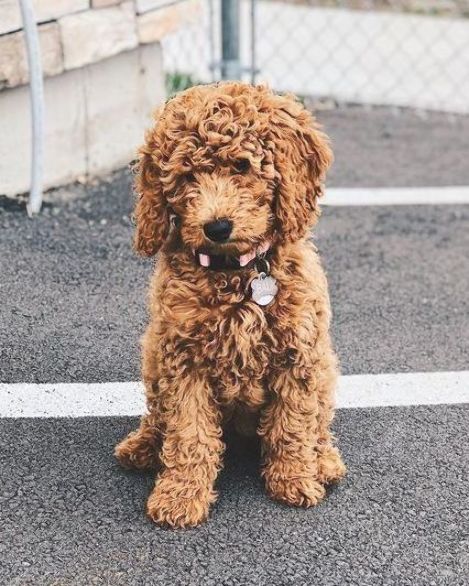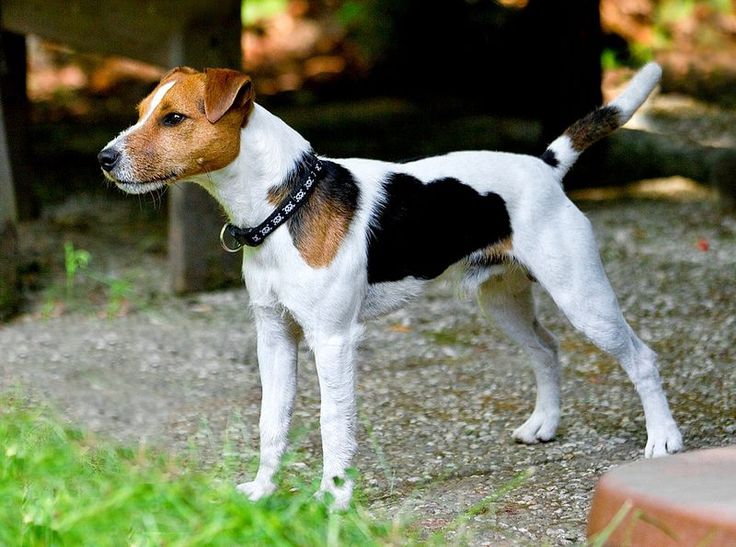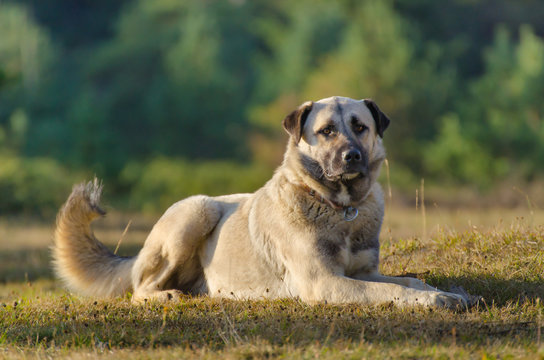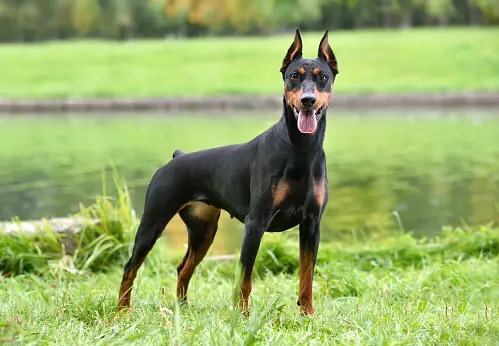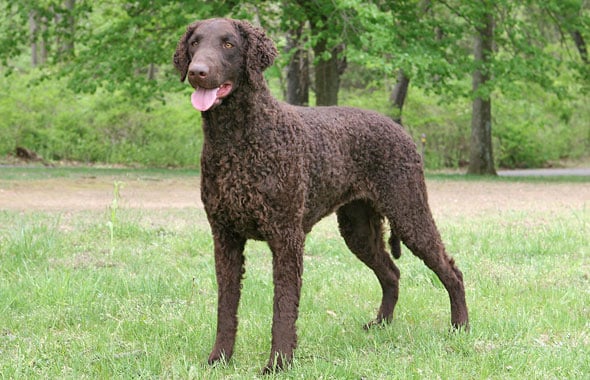Great Dane is known as the gentle giant of the dog world due to their impressive size and friendly nature. These majestic dogs are renowned for their calm and patient demeanor, making them excellent family pets. In dog breed guide, we will explore the history, characteristics, and care requirements of Great Dane, shedding light on why they have earned their reputation as the gentle giants of the dog world.
History of Great Dane
Origins of Great Dane
Great Dane, also known as Deutsche Dogge or German Mastiff, have a rich and fascinating history. The exact origins of this majestic breed are somewhat debated among historians and dog enthusiasts. However, it is widely believed that Great Dane can trace their roots back to ancient civilizations.
Some experts argue that Great Dane have ancient Egyptian roots, as depictions of dogs resembling them have been found on ancient artifacts and tomb paintings. Others suggest that the breed may have descended from Tibetan Mastiffs, which were brought to Europe by nomadic tribes.
Early uses of Great Dane
During the Middle Ages, Great Danes were primarily used for hunting large game. Their immense size and strength made them perfect for tracking and capturing wild boar, bears, and deer. These dogs were highly valued for their bravery, agility, and keen sense of smell, which made them formidable hunters.
As time went on, Great Dane also found roles as guard dog and protector. Their imposing appearance and deep bark made them an intimidating presence, capable of warding off intruders and protecting their owners and properties.
Development of the breed
The modern-day Great Dane we know and love has undergone significant development throughout history. In the 16th century, German nobility played a crucial role in refining the breed, focusing on enhancing its size, strength, and overall appearance.
In the 19th century, a Danish nobleman named Otto Friedrich von Bismarck became instrumental in promoting the breed and its standardization. He established the Deutsche Doggen-Klub in Germany, which aimed to maintain and improve the breed’s characteristics through careful breeding practices.
Over time, breeders selectively crossed Great Danes with other dog breeds to enhance specific traits. This led to the development of different variations within the breed, such as the Harlequin, Black, and Blue Great Danes.
Today, Great Danes are recognized as one of the largest dog breeds in the world. They have become beloved family pets, known for their friendly and gentle nature, despite their imposing size and appearance. The breed’s fascinating history has contributed to its enduring popularity among dog enthusiasts worldwide.
Physical Characteristics
Size and weight
Great Dane is known for their impressive size and immense strength. As one of the largest dog breeds in the world, they tower over most other dogs. Adult Great Danes typically stand at a minimum height of 30 inches at the shoulder, with some individuals reaching an astonishing height of 34 inches or more. In terms of weight, these gentle giants can weigh anywhere between 140 to 175 pounds, with some exceptional individuals even tipping the scales at over 200 pounds.
Coat and color
The Great Dane’s coat is short, dense, and smooth to the touch, providing them with a sleek and elegant appearance. Despite being short, their coat offers them adequate protection against various weather conditions. Great Danes come in a range of colors, including fawn, brindle, blue, black, harlequin, and mantle. Fawn and brindle are the most common colors, while the harlequin pattern, consisting of a white base with irregular black patches, is particularly striking and sought after.
Distinctive features
Apart from their sheer size, Great Danes possess several distinctive features that make them easily recognizable. One of their most notable features is their powerful and muscular build, which contributes to their overall strength and agility. Their head is large and proud, with a deep-set muzzle and a well-defined stop. Great Danes have dark, expressive eyes that exude a gentle and intelligent demeanor. Their ears are medium-sized, high-set, and usually cropped to stand erect, although some individuals have natural ears that fold gracefully. Finally, their long, slender tail tapers to a point and hangs low when at rest, but they carry it higher when they are alert or in motion.
Great Dane possess physical characteristics that set them apart from other dog breeds. From their impressive size and weight to their short and sleek coat, these gentle giants are truly a sight to behold. With their distinctive features, including their powerful build, expressive eyes, and graceful tails, Great Dane leave an indelible mark on anyone lucky enough to encounter them.
Temperament and Personality
Gentle and friendly nature
Great Danes are well-known for their gentle and friendly nature. Despite their imposing size, they are often referred to as the “gentle giants” of the dog world. These dogs have a calm and patient demeanor, making them excellent companions for individuals and families alike.
Good with children
One of the remarkable traits of Great Danes is their ability to get along well with children. They have a natural instinct to be gentle and protective, making them an ideal choice for families with young kids. Great Danes are patient and tolerant, and they often develop strong bonds with children, becoming their loyal and loving playmates.
Protective instincts
In addition to their gentle nature, Great Danes also possess strong protective instincts. They are naturally inclined to watch over and safeguard their loved ones. With their size and strength, they can act as excellent guard dogs, deterring potential intruders. Despite their friendly and outgoing personality, Great Danes are known to be fiercely protective of their family and property when the need arises.
Overall, the temperament and personality of Great Danes make them a wonderful addition to any household. Their gentle and friendly nature, combined with their ability to get along well with children and their protective instincts, make them loyal and loving companions that bring joy and security to their owners.
Training and Exercise
Training methods for Great Danes
When it comes to training Great Danes, it is essential to use effective and positive reinforcement methods. These gentle giants respond well to consistent and patient training techniques. Here are a few recommended methods for training Great Danes:
- Positive reinforcement: Great Danes are highly motivated by praise, treats, and rewards. Using positive reinforcement techniques such as clicker training or treats for desired behaviors can be incredibly effective. This method helps build a strong bond between the dog and the trainer, making the training experience more enjoyable for both.
- Consistency: Great Danes thrive in a structured environment. Consistency is key when it comes to training them. Establish clear rules and boundaries from the beginning and ensure that everyone in the household follows them consistently. This will help prevent confusion and create a well-behaved and obedient Great Dane.
- Gentle approach: Due to their sensitive nature, Great Danes respond best to a gentle and patient training approach. Harsh or forceful training methods can cause fear or anxiety in these dogs, leading to undesired behavior. It is important to be patient, understanding, and use positive reinforcement to encourage the desired behaviors.
Exercise needs and activities
Great Danes may be gentle, but they require regular exercise to maintain a healthy body and mind. Here are some exercise needs and activities suitable for Great Danes:
- Daily walks: Great Danes should be taken for daily walks to help them burn off excess energy. Aim for at least two walks per day, ensuring that the duration and intensity are appropriate for their age and health. Long walks not only provide physical exercise but also mental stimulation for these intelligent dogs.
- Off-leash play: Great Danes love to stretch their long legs and run freely. Finding a safe and enclosed area where they can run off-leash is ideal. This allows them to engage in high-energy activities like chasing balls or playing with other dogs, which helps keep them physically fit and happy.
- Swimming: Great Danes are natural swimmers, and swimming is an excellent low-impact exercise for them. If you have access to a pool, lake, or beach, take advantage of this opportunity to let your Great Dane cool off and exercise. Always supervise them closely and ensure their safety while swimming.
Socialization and obedience training
Socialization and obedience training are crucial aspects of raising a well-behaved Great Dane. Properly socialized dogs are more confident, friendly, and less likely to develop behavioral issues. Here are some tips for socialization and obedience training for Great Danes:
- Early socialization: Start socializing your Great Dane from a young age. Introduce them to various people, animals, and environments in a positive and controlled manner. This will help them become comfortable and well-adjusted in different situations, reducing the likelihood of fear or aggression later on.
- Enroll in obedience classes: Great Danes benefit greatly from obedience classes where they can learn basic commands and proper behavior in a structured environment. These classes provide an opportunity for socialization with other dogs and help reinforce training techniques. Working with a professional trainer can also assist in addressing any specific behavioral concerns.
- Continued socialization: Socialization should be an ongoing process throughout your Great Dane’s life. Regularly expose them to new experiences, environments, and different types of people and animals. This will help them maintain their social skills and prevent them from becoming anxious or reactive in unfamiliar situations.
Remember, training and exercise go hand in hand in ensuring the well-being and happiness of your Great Dane. By using positive reinforcement, providing regular exercise, and focusing on socialization and obedience training, you can help your gentle giant become a well-rounded and well-behaved member of the family.
Health and Care
Common health issues
Great Danes, despite their majestic appearance, are prone to certain health issues. It is important for owners to be aware of these common health problems to ensure the well-being of their gentle giants.
One common health issue that Great Danes face is gastric dilatation-volvulus, also known as bloat. This condition occurs when the stomach expands with gas and twists, which can be life-threatening if not treated promptly. It is crucial for owners to monitor their Great Danes’ eating habits, avoid overfeeding, and provide smaller meals throughout the day to help prevent bloat.
Another health concern for Great Danes is hip dysplasia. This inherited condition affects the hip joints, causing pain and difficulty in mobility. Regular exercise, maintaining a healthy weight, and providing joint supplements can help manage this condition and improve the quality of life for Great Danes.
Heart disease is also prevalent in Great Danes. Dilated cardiomyopathy is a specific form of heart disease that affects the heart muscle, leading to weakened contractions and potential heart failure. Routine veterinary check-ups, a balanced diet, and appropriate exercise can aid in early detection and management of heart-related issues.
Proper nutrition
Proper nutrition plays a vital role in maintaining the health and longevity of Great Danes. Due to their large size, it is crucial to provide them with a balanced diet that meets their specific nutritional needs.
High-quality dog food formulated for large breeds is recommended for Great Danes. These foods typically contain appropriate levels of protein, fat, and essential nutrients to support their growth and development. It is important to choose a dog food that is free from fillers and artificial additives to promote optimal health.
Feeding Great Danes multiple small meals throughout the day, rather than one large meal, can help prevent bloat and aid in digestion. Additionally, monitoring their weight and adjusting their food intake accordingly is essential to prevent obesity, which can put added strain on their joints and overall health.
Consulting with a veterinarian or a canine nutritionist can provide further guidance on the specific dietary needs and portion sizes for Great Danes, ensuring they receive the necessary nutrients to thrive.
Grooming requirements
Despite their short coat, Great Danes still require regular grooming to keep them looking their best and to maintain good hygiene.
Brushing their coat once or twice a week using a soft-bristle brush or a grooming glove helps to remove loose hair, prevent matting, and distribute natural oils, keeping their coat healthy and shiny.
Great Danes are prone to drooling, so it is important to keep their facial area clean. Regularly wiping their mouth and jowls with a damp cloth or dog-safe wipes can help prevent skin irritation and odor.
Nail trimming is another grooming essential for Great Danes. Their large size necessitates proper nail care to prevent overgrowth and discomfort. Trimming their nails every few weeks or as needed, using appropriate dog nail clippers or seeking professional assistance, helps prevent potential issues.
Lastly, maintaining good dental hygiene is crucial for Great Danes. Regular teeth brushing with dog-friendly toothpaste, providing dental chews or toys, and scheduling professional dental cleanings can help prevent periodontal disease and keep their teeth and gums healthy.
By providing regular grooming sessions and incorporating these practices into their care routine, Great Danes can enjoy a clean and well-maintained appearance while staying healthy and comfortable.
Great Dane as Family Pets
Suitability for families
Great Dane is known for their gentle and friendly nature, making them excellent family pets. They are incredibly patient and tolerant, especially with children, which makes them an ideal choice for families with kids. Great Dane is typically very affectionate and enjoy being part of a loving household. Their calm and easygoing temperament allows them to bond well with family members of all ages.
Living with other pets
Despite its large size, Great Dane generally get along well with other pets. They have a generally peaceful and non-aggressive nature, which makes them compatible with other animals in the household. Proper socialization and gradual introductions are important when integrating a Great Dane into a home with existing pets. With the right training and supervision, Great Danes can coexist harmoniously with other dogs, cats, or smaller animals.
Space requirements
Due to their massive size, Great Danes do require a considerable amount of space. They are not well-suited for small apartments or homes with limited room to move around. Great Danes are more comfortable in houses with large yards where they can freely roam and stretch their legs. Adequate space is essential to ensure their physical and mental well-being. Additionally, having enough room for their large dog bed, food bowls, and toys is necessary to accommodate their size and promote a comfortable living environment.
Great Danes make wonderful family pets due to their gentle nature and compatibility with other animals. However, it’s important to consider their space requirements when considering them as pets, as they need ample room to thrive and be happy.
Great Danes truly live up to their reputation as the gentle giants of the dog world. These majestic and friendly animals make wonderful companions and are known for their calm and patient nature. Whether as family pets or therapy dogs, Great Danes bring joy and comfort to those around them. Their size may be intimidating, but their hearts are full of love and devotion. If you are looking for a loyal and gentle canine companion, Great Danes are an excellent choice.

